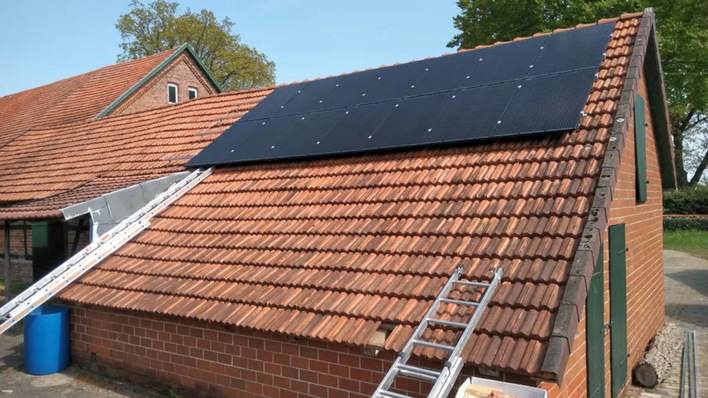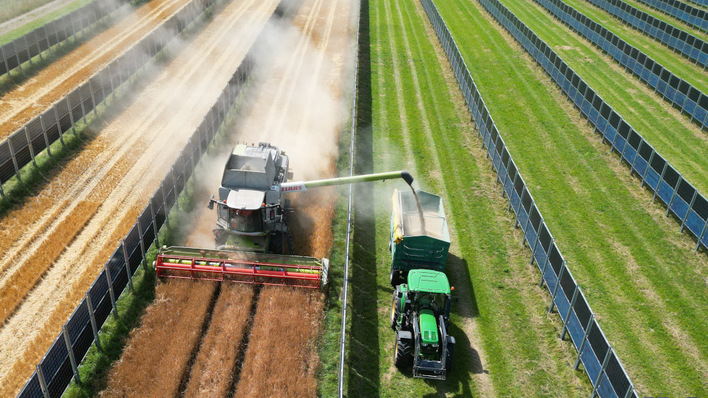Agriphotovoltaics is economical for farmers who use their fields twice in this way. Especially in dry locations, they can help regulate the water balance and actually additionally increase agricultural yields. However, there is a lack of practicable solutions for grid connection and approval procedures. These are two key findings of a study conducted by the Institute for Ecological Economy Research (IÖW) and the Kehl University of Public Administration (HSK).
Synergies between land and energy management
In the Landgewinn project led by the University of Applied Sciences Offenburg, the researchers show how agriphotovoltaics can become economically viable. To this end, they have examined various future technologies for agriculture from an economic, ecological, socio-scientific, legal and overall systemic perspective. "Agriphotovoltaics offers useful synergies between agriculture and the energy sector. On the one hand, it opens up new areas for the energy transition. On the other hand, it helps farmers adapt to climate change because the solar modules offer protection against weather extremes such as heat and heavy rain," explains Hannes Blum, energy economist at the IÖW.
Talking to farmers
The researchers did not just look at the grey theory, however, but also discussed with farmers how agriphotovoltaics can be implemented in practice. Specialised planning offices and an energy supplier were also involved. From this discussion it emerged that the farmers fear restrictions in cultivation due to the solar plants, especially on fertile soils.
See also: Fraunhofer ISE develops new concept for solar thermal tower power plants
Dual use is therefore particularly interesting on less productive land. There, solar plants could actually increase yields through shading. In this way, they can help dry locations and heat-sensitive plants adapt to climate change. They also protect special crops in fruit growing from hail and heavy rain.
Permits still too complicated
However, many farmers have so far shied away from the complicated approval procedures. That is why the project partners from the HSK have classified the situation regarding agriphotovoltaics from a legal point of view. "On arable land directly next to motorways or two-lane railway tracks, an application for agriphotovoltaic use has good chances," explains Antonia Kallina, a lawyer at the HSK. "For all other areas, municipalities must first draw up a development plan and sometimes actually change the land use plan. That is a considerable legal hurdle."
Enabling land use
Therefore, municipalities and land owners would have to enable dual use by agriphotovoltaics in the development plans and lease agreements. Only then can suitable land be used. "So far, they tend to prefer open space photovoltaics without agricultural use, for example because of higher lease prices or because they do not know that dual use is possible," the researchers sum up. Antonia Kallina recommends privileging agriphotovoltaics in building planning law. "With the right wording, a good compromise is possible to protect the interests of the environment on the one hand and to enable the innovation potential of the still young technology on the other," says the legal expert.
Cooperate with grid operators
The use of electricity and the feeding of solar energy into the grid was also a topic of the study. Farmers can use the electricity from the field directly themselves or sell it to a local bulk buyer. "But at the moment, there is often a lack of the necessary infrastructure and cooperation," says Johannes Rupp of the IÖW. "More experience is needed, and above all agriculture, energy suppliers and grid operators should exchange information more intensively when selecting land. The municipalities as land owners and licensing authorities should also play a strong role in this," Rupp recommends.
Also interesting: Solar drying and solar-powered ice production in Kenya
The study on agriphotovoltaics can be downloaded from the IÖW website. The planning law assessment is available on the Landgewinn project website. There you can also find out about the further progress of the research. (su/mfo)








